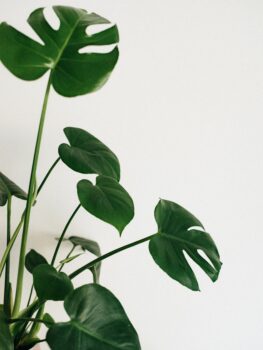How to Maintain Healthy Plant Roots?

Healthy roots mean healthy plants.
Good maintenance of your root zone is essential for optimum plant growth. Plants derive nutrients and water through their leaves as well as the roots, in an indoor grow room foliar feeding is not always easy.
Many problems that occur when growing indoors will be a result of an imbalance within your root zone and can usually be identified by characteristics in the plant itself.
There are several problems that come from compromised/damaged root systems:
1. Overwatering or underwatering the plants
Too much water within the root zone will drown the plant.
Overwatering typically occurs in soil.
Bedding in the process is usual whereby the small plants are allowed time to grow root into the substrate.
This may mean daily watering’s initially gradually upping the frequency of watering’s to normal, whether that be continual Nutrient Film Technique flow or drippers emitting nutrient solution hourly.
Too little water will again result in wilting/drooping of the plant’s leaves but tends to affect all of the plants.
The leaves will start to shrivel, yellow, dry, and die. Once the roots completely dry out there is very little time to salvage the plant especially if it is a fully grown one, this is particularly true for Aeroponic systems where plants are relying on regular misting of the rhizosphere.
How to stop under or overwatering the plants
If a plant has been overwatered, then don’t water it again until the excess water has fully drained out or been used by the plant.
A good tip is to pick the pot up when it is fully watered, and make a mental note of how heavy it is.
If the pot is just as heavy next time you pick it up, then your plants will NOT need watering.
You should wait until pots or soil are significantly lighter, as stated this is particularly true for young plants recently ‘potted up’.
Overwatering is simply corrected by altering the frequency of watering.
If a plant has been under-watered…. then water it!
If you come in and find your plant in a slump with wilted leaves and the soil bone dry, then you need to get some water to them asap.
Be careful not to deluge the plant as this can lead to overwatering straight away and then you must correct that problem as well.
So, water the plant in little amounts at a time until adequate saturation is established and see how it responds.
Be kind to plants that may have suffered in this way. Back the lights away so you are not forcing them into excessive transpiration.
2. Plant pH imbalance
The pH of your substrate/medium has a direct result of what nutrients can be absorbed.
In general, you want to be between 5.5 and 6.5 and up to pH7 in an organic substrate such as coco.
If you fall outside of this sweet spot you will encounter problems.
Extremely high and low pH will start to affect the uptake of certain elements resulting in deficiencies or overfeeding of certain elements.
How to keep your plant pH in balance
Check the pH of your nutrient solution regularly and if you can.
You can either invest in a pH test kit or a Bluelab pH pen, the pH test kits are fail-safe, as will be a pH meter if it is well cared for and regularly calibrated with Buffers.
3. Make sure the pot is the right size
Traditional pot growing with soil can lead to plants becoming root bound, it can be caused by there simply not being enough space for the roots left to grow into.
Or it can happen when tap roots are seeking out nutrient elements not readily available.
How to pick the right pot size for your plant
Pot your plants up in stages to give them the best opportunity for roots to develop in the growing substrate.
Make sure the pot you choose is big enough to support the size of plants you intend to grow.
Ensure plants are consistently and well-fed in soil, this will negate roots ‘searching out’ elements and strangulating.
Progrow also has excellent Air-pots and how their design (air pruning the roots) negates this problem entirely 😏
4. How to prevent plant root rot
You can’t fix the root rot – it’s pretty much a death sentence for your plant.
However, there are few things you could do to prevent it.
Root rot is likely to happen in poorly oxygenated, stagnant water that has exceeded 20 degrees Celsius.
Water temperature plays a vital role in oxygen saturation within your water tanks. The higher the water temperature the less oxygen the water can contain. The sweet spot is between 16 and 18 degrees, higher than 20c and water loses its ability to hold oxygen.
Root rot (pythium) is a water mould so keeping your hydroponic systems cleaned and sterile is essential.
The biggest sign of root rot will be the smell … if your roots have gone slimy, brown, and stink….then you have root rot!
What can be done?
Sterilize your plastics, syringes, pH & EC meters after every crop with Hydrogen peroxide.
The last thing you need is transference from one system to the next. Products like Regen-a-root and Wilt Guard can help in the first instance protect against this type of rot.
Water movement is also essential and can help maintain oxygen levels in the nutrient solution. Air-stones and Bubblegen are the two most popular methods of oxygenating and moving the water so it does not stagnate.
Air pumps have the disadvantage of making a buzzing so if space permits it, we recommend a Bubblegen which runs silent and connects to a water pump to circulate the water as well.
